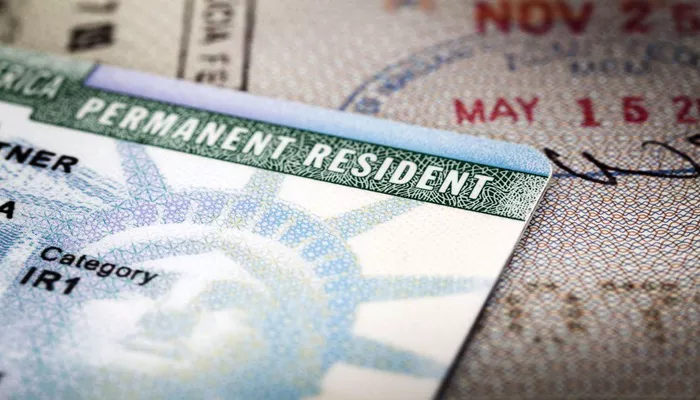Navigating the U.S. immigration system can be complex, especially for those who are undocumented. However, there are pathways to obtain a green card, also known as lawful permanent residency. This article will guide you through the process, the options available, and essential information to help you understand your rights.
Understanding the Green Card
A green card allows you to live and work in the United States permanently. It is essential for those looking to stabilize their status and build a future in the country. There are various ways to obtain a green card, including family sponsorship, employment opportunities, refugee or asylum status, and special programs.
Eligibility Requirements
Before you apply for a green card, it is vital to determine your eligibility. Here are some common criteria:
Family Relationship: If you have a U.S. citizen or lawful permanent resident family member, they may sponsor you.
Employment: If an employer is willing to sponsor you, you may qualify through employment.
Special Programs: Certain programs, like DACA (Deferred Action for Childhood Arrivals), can provide pathways to legal residency.
Humanitarian Status: Individuals who qualify as refugees or asylees may be eligible.
Pathways to a Green Card for Undocumented Immigrants
1.Family-Based Green Card
If you have a family member who is a U.S. citizen or a lawful permanent resident, they can petition for you to obtain a green card. This process involves several steps:
Petition: Your relative must file Form I-130 (Petition for Alien Relative).
Wait for Approval: After approval, you must wait for a visa to become available.
Adjustment of Status: If you entered the U.S. legally, you could adjust your status using Form I-485 (Application to Register Permanent Residence or Adjust Status). However, if you entered illegally, you may face challenges.
2. Employment-Based Green Card
If you can secure a job offer from a U.S. employer, they may be able to sponsor you for a green card. The process typically involves:
Labor Certification: The employer must obtain labor certification from the Department of Labor.
Petition: The employer files Form I-140 (Immigrant Petition for Alien Worker).
Adjustment of Status: Again, if you entered legally, you could adjust your status. If you entered illegally, other options may be available, depending on your circumstances.
3. Special Programs
Certain programs may provide relief and pathways to a green card for undocumented immigrants:
DACA: If you are a DACA recipient, you may be eligible for a green card through family or employment sponsorship.
Temporary Protected Status (TPS): If you are from a country designated for TPS, you may be eligible for a green card once you meet the required conditions.
4. Humanitarian Options
If you have faced persecution or fear returning to your home country, you may qualify for asylum. To be eligible:
File for Asylum: You must file for asylum within one year of entering the U.S.
Demonstrate Fear: You need to prove a well-founded fear of persecution.
Once granted asylum, you can apply for a green card after one year.
Consequences of Being Undocumented
It’s crucial to understand the implications of being undocumented:
Inadmissibility: Unlawful presence can make you inadmissible for a green card. This could lead to a 3 or 10-year ban on re-entry.
Legal Representation: Consulting an immigration attorney can provide you with tailored advice based on your situation.
Applying for a Green Card
Step 1: Choose the Right Pathway
Identify which green card category applies to you. This choice depends on your circumstances, such as family connections, employment opportunities, or special programs.
Step 2: File the Appropriate Petition
Once you have chosen a pathway, the next step is to file the necessary forms:
Family-Based: File Form I-130.
Employment-Based: File Form I-140.
Asylum: File Form I-589 (Application for Asylum).
Step 3: Wait for Approval
After filing your petition, it will be reviewed by U.S. Citizenship and Immigration Services (USCIS). This process can take several months or even years, depending on the category and individual circumstances.
Step 4: Adjustment of Status or Consular Processing
Depending on your case, you may need to adjust your status in the U.S. or go through consular processing in your home country.
Adjustment of Status: If eligible, file Form I-485.
Consular Processing: Attend an interview at a U.S. consulate in your home country.
see also: How Long Does a Green Card Last?
Common Challenges
1. Inadmissibility Issues
If you have been undocumented for over 180 days, you may face a ban. It’s essential to understand these potential issues early in the process.
2. Documentation
Gathering necessary documentation can be challenging. Ensure you have:
- Proof of family relationship or employment.
- Identification documents.
- Evidence of residency in the U.S.
3. Legal Help
Seeking the help of an immigration attorney can significantly improve your chances of success. An attorney can help navigate complex legal issues, prepare your application, and represent you in court if necessary.
Conclusion
Obtaining a green card as an undocumented immigrant is challenging but not impossible. Understanding your options and taking the correct steps can make a significant difference. Always consider consulting with an immigration attorney to navigate the complexities of the U.S. immigration system effectively. With persistence and the right guidance, you can work toward achieving your goal of lawful permanent residency.
Related topics:
- How Long Does a Marriage Green Card Take?
- Do Green Card Holders Get Social Security Numbers?
- How Much Does the Green Card Lottery Cost?


